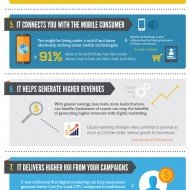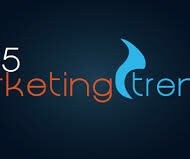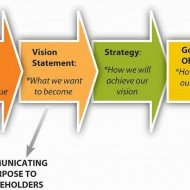Posted by Managementguru in Motivation, Quotes and Quotes Only, Strategy
on May 9th, 2015 | 0 comments

Top 50 Popular Quotes from Management Gurus Leadership and Management philosophies differ from a management guru to another management guru. Here are 50 useful quotes from top notch management doyens that will help you understand the various facets of management from their rich experience. You can treat these quotes as a starting point to build your dreams. Michael Porter Strategy Quotes from Michael Porter Strategy is about making choices, trade-offs; it’s about deliberately choosing to be different.”“The underlying principles of strategy are enduring, regardless of technology or the pace of change.”“The essence of strategy is that you must set limits on what you’re trying to accomplish.”“The essence of strategy is choosing what not to do.”“The chief strategist of an organization has to be the leader – the ceo.”“If all you’re trying to do is essentially the same thing as your rivals, then it’s unlikely that you’ll be very successful.”“Finally, strategy must have continuity. It can’t be constantly reinvented.”“Innovation is the central issue in economic prosperity.”“Sound strategy starts with having the right goal.”“So companies have to be very schizophrenic. On one hand, they have to maintain continuity of strategy. But they also have to be good at continuously improving.” Stephen Covey Leadership Quotes from Stephen Covey “Effective leadership is putting first things first. Effective management is discipline, carrying it out.”“There are three constants in life… Change, choice and principles.”Every human has four endowments- self awareness, conscience, independent will and creative imagination. These give us the ultimate human freedom… The power to choose, to respond, to change.”“The main thing is to keep the main thing the main thing.”“We are not animals. We are not a product of what has happened to us in our past. We have the power of choice.”“Management is efficiency in climbing the ladder of success; leadership determines whether the ladder is leaning against the right wall.”“The key is not to prioritize what’s on your schedule, but to schedule your priorities.”“Public behavior is merely private character writ large.”“When you really listen to another person from their point of view, and reflect back to them that understanding, it’s like giving them emotional oxygen.”“Trust is the glue of life. It’s the most essential ingredient in effective communication. It’s the foundational principle that holds all relationships.” Daniel Goleman Emotional Intelligence Quotes from Daniel Goleman “Emotional intelligence begins to develop in the earliest years. All the small exchanges children have with their parents, teachers, and with each other carry emotional messages.”“Well, any effort to maximize your potential and ability is a good thing.”“Teachers need to be comfortable talking about feelings.”“There is zero correlation between iq and emotional empathy… They’re controlled by different parts of the brain.”“People tend to become more emotionally intelligent as they age and mature.”“Mindful meditation has been discovered to foster the ability to inhibit those very quick emotional impulses.”“If your emotional abilities aren’t in hand, if you don’t have self-awareness, if you are not able to manage your distressing emotions, if you can’t have empathy and have effective relationships, then no matter how smart you are, you are not going to get very far.”“the emotional brain responds to an event more quickly than the thinking brain.”But once you are in that field, emotional intelligence emerges as a much stronger predictor of who will be most successful, because it is how we handle ourselves in our relationships that determines how well we do once we are in a given job.”“My hope was that organizations would start including this range of skills in their training programs – in other words, offer an adult education in social and emotional intelligence.” Ken Blanchard Productivity Quotes from Ken Blanchard “The productivity of a work group...

Posted by Managementguru in Marketing, Social Media, Startups, Technology
on Apr 8th, 2015 | 0 comments

Disclaimer: This content is curated and since information related to digital marketing is available aplenty on the Internet, I thought of compiling data in a sequential and comprehensive manner for the benefit of the readers. One of the easiest, fastest and cheapest ways for businesses to reach consumers today is via the Internet. Read on: Fed Fix: What is Inbound Marketing? This resourceful article explains essential inbound marketing strategies and tactics that companies can use to boost their campaigns’ effectiveness. Digital marketing, also known as Internet or online marketing, is quickly replacing print, television and radio advertisement as the marketing approach of choice for businesses of all sizes. Recent research revealed that 1 in 4 of every business-advertising dollar is dedicated to Internet marketing. Digital marketing uses internet connected devices such as smart phones, laptops and tablets to engage customers online via technologies such as web and email in conjunction with digital customer data such as characteristics and behaviour. Channels include display advertising, search engine optimisation (SEO) and search engine marketing (SEM). It also includes email, RSS, blogging, podcasting, video streams, social networks and instant response messaging. If you are looking for an edge over your competitors, a digital marketing strategy can provide many benefits to today’s savvy business owner. Benefits of Digital Marketing for Small Business 👇 Instant Access Wide reach to internet users in a single click. Cost Effective A well planned and targeted digital marketing campaign can help your business reach your target audience at a lower cost compared to traditional marketing tactics. Open 24/7 Your website is available to your target audience 24/7. Increases Customer Retention and Loyalty Engage with your customers in a more personalised way when you advertise your products and services. Community Building and Reputation Social media provides the perfect platform to build customer loyalty and build strong online reputation. Research Provides the possibility for an immediate response and feedback from today’s connected consumer. It’s Measurable Track your online campaign’s success in real time. Digital Marketing Channels or Campaigns Online marketing doesn’t only revolve around your website. Although this is an important part of it, you should be aware of other channels that will aid your digital marketing strategy. Whether you’re looking at low budget or blow–the- budget campaigns, these forms of digital marketing are ideal for small businesses as you can adapt your activity to suit your financial situation: 👇 Discover a huge collection of digital assets on Social Media Marketing here! 1. Content Marketing Your website is a powerful tool within your marketing strategy. Most of the time this is where you will be directing your customers to when you engage with them so it’s important to ensure you have interesting content to keep your customers on the site for longer. Start by keeping an interesting blog so that you can share relevant content with your customers and draw them to your site. With new technologies, more people are reading content on their mobile phones and tablets than ever before. It’s important to ensure your website is easy to browse and interact with on these different devices so that customers can have a good user experience on the move. 2. Search Engine Marketing Stay ahead of your competitors by driving traffic to your website using Search Engine Optimisation (SEO). It works by optimising your site to increase its organic ranking in search engine results (for example how high up you would appear in a search list on Google), so that customers will be more likely to visit your site. Search engine marketing focuses on improving your ranking using specific methods such as improving your use of keywords (words and phrases...

Posted by Managementguru in Marketing
on Mar 24th, 2015 | 0 comments

Follow ManagementGuru Net’s board Marketing and Product Management on Pinterest. Enrich yourself with info on current marketing trends and how internet helps you in optimizing your customer relationship and experience. It is no surprise that social media has changed the face of digital marketing, or marketing overall for that matter. The transition is so smooth that the line between traditional and digital marketing has been off-set and a great many companies are finally accepting the fact that to win in marketing they ought to have a solid digital #strategy and that strategy should probably include using social media. Following are my top 7 predictions for digital marketing trends in 2015. Email marketing will need to become smarter. Brands that succeed at being human will win. Content marketing will (finally) become about true value. We’ll begin to see a decrease in the number of online marketing strategies businesses employ. Brands who use social primarily for “pushing” sales will die out. “Mobile-first” will replace “mobile-friendly”. Content marketing will become integrated company-wide. Courtesy – 7 Digital Marketing Trends That Will Dominate 2015 New Business Tools & Resources for Marketing Agencies from HubSpot How to Find and Tell Stories to Maximise Your Business Opportunities from Sarah...

Posted by Managementguru in Glossary, Strategy
on Mar 5th, 2015 | 0 comments

The following is a list of “Key Terms of #Strategic Management” which find their use often when trying to explain the concepts. #Mission An important undertaking that an organization believes it is its duty to do. A specific task or duty assigned to a person or group of people. Missions tend to be long-term and laid out in broad terms, without attempts being made to quantify them precisely. #MISSION STATEMENT Mission statement An open statement of the aims and #objectives of a business or an organization – providing employees with an indication of what they are attempting to achieve through their collective deeds. Mission statements are intended to give substance to the perceived purposes of the organization. Vision Statement A Vision Statement defines what your business will do and why it will exist tomorrow and it has defined #goals to be accomplished by a set date. A Vision Statement takes into account the current status of the organization, and serves to point the direction of where the organization wishes to go. Objective Something which an organization intends to do or achieve; a result that the organization intends to make happen. Long-term or short-term objective, which you hope to achieve within a few years or a few months. Objectives and aims tend to be medium-term and more specific in terms of what is intended to be achieved. SMART OBJECTIVES #Strategy A #plan of future action, usually long-term, in the pursuit of objectives. (e.g.) business strategy; company strategy; financial strategy. The formulation of long-term plans and policies by a firm which inter-connects its various production and marketing activities in order to achieve its business objectives. STRATEGY GENERATION #Aim A result that an organization’s plans or actions are intended to achieve. (e.g.) To try to do something: we aim to be No. 1 in the market in three years’ time. Goal An organization’s aim, objective or purpose. Goals and targets tend to be medium-term or short-term and may be expressed in terms of specific levels of achievements and tend to involve more specific quantification and deadlines. (e.g.) our goal is to break even within twelve months. GOALS VS. OBJECTIVES #Target A level or situation which an organization intends to achieve or aim at. An object or area aimed at the object of an attack or takeover bid. A fixed goal or objective, etc. #Tactics The plans followed to achieve a particular short-term aim. (a) The science and art of disposing and maneuvering forces in combat. (b) The art or skill of employing available means to accomplish an end. (c) A system or mode of procedure TACTICS OR STRATEGY? Plan A set of decisions about how an organization intends to do something, or to ensure that an event or result should happen in the future. Organized way of doing something: contingency plan, government’s economic plans. Plans tend to be quite specific (the shorter-term they are, the more specific they tend to be) and are usually quantified in some detail. They will, in order to ensure that they are complied with, lay out specific deadlines for each key stage. They may also involve the consideration or analysis of priorities and constraints. STRATEGIC PLANNING #Budget A #financial plan, which may be short-term or longer-term, showing probable (planned) #income and #expenditure. Budgets tend to be expressed mainly in monetary terms, although they may focus on the amounts of physical resources (materials, labor time) required. An estimate of income and expenditure for a future period, as opposed to an account, which records financial transactions after the event. BUDGET...

Posted by Managementguru in Business Management, Decision Making, Financial Management, Marketing, Sales, Startups, Strategy
on Mar 4th, 2015 | 0 comments

A popular “Corporate Portfolio Analysis” technique is the result of pioneering effort of General Electric Company along with McKinsey Consultants which is known as the GE NINE CELL MATRIX. GE Nine-Box Matrix This is a strategy tool that offers a systematic approach for the multi business enterprises. It helps them to prioritize their investments among the various business units. It is a framework that evaluates business portfolio and provides further strategic implications. Each business is appraised in terms of two major dimensions – Market Attractiveness and Business Strength. If one of these factors is missing, then the business will not produce desired results. Neither a strong company operating in an unattractive market, nor a weak company operating in an attractive market will do very well. The vertical axis denotes industry attractiveness, which is a weighted composite rating based on eight different factors. They are: Market size and growth rateIndustry profit margins Intensity of Competition Seasonality Product Life Cycle Changes Economies of scale Technology Social, Environmental, Legal and Human Impacts What Does the Horizontal Axis Represent? It indicates business strength or in other words competitive position, which is again a weighted composite rating based on seven factors as listed below: Relative Market ShareProfit margins Ability to compete on price and qualityKnowledge of customer and market Competitive strength and weakness Technological capability Caliber of management The two composite values for industry attractiveness and competitive position are plotted for each strategic business unit (SBU) in a COMPANY’S PORTFOLIO. The PIE chart (circles) denotes the proportional size of the industry and the dark segments denote the company’s respective market share. The green zone suggests you to ‘go ahead’, to grow and build, pushing you through expansion strategies. Businesses in the green zone attract major investment. Red indicates that you have to adopt turnover strategies of divestment and liquidation or rebuilding approach. Advantages Helps to prioritize the limited resources in order to achieve the best returns.The performance of products or business units becomes evident. It’s more sophisticated business portfolio framework than the BCG matrix. Determines the strategic steps the company needs to adopt to improve the performance of its business portfolio. Disadvantages Needs a consultant or an expert to determine industry’s attractiveness and business unit strength as accurately as possible.It is expensive to conduct. It doesn’t take into account the harmony that could exist between two or more business units. PORTER’S FIVE FORCES-INDUSTRY...










